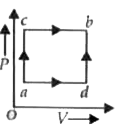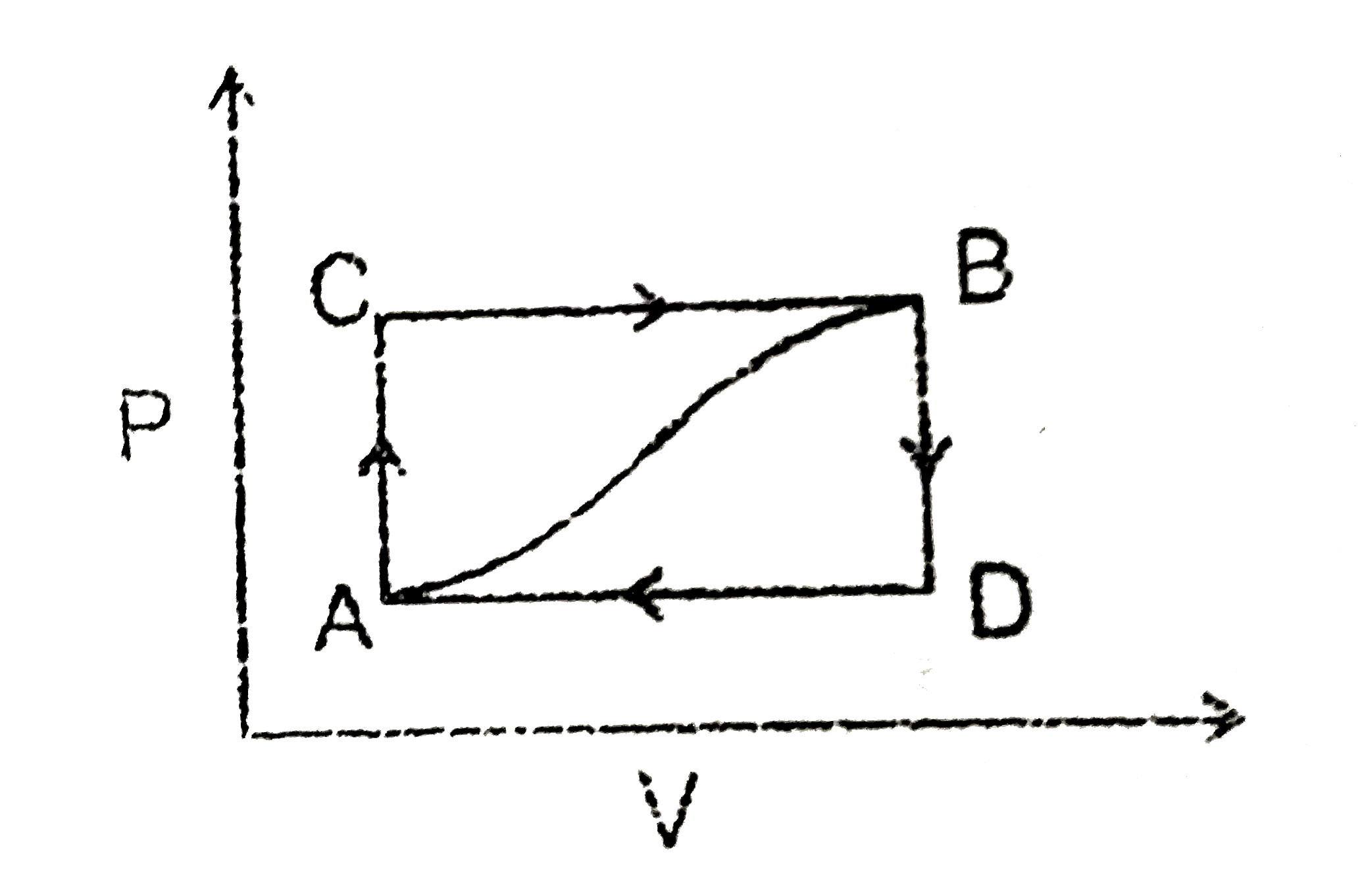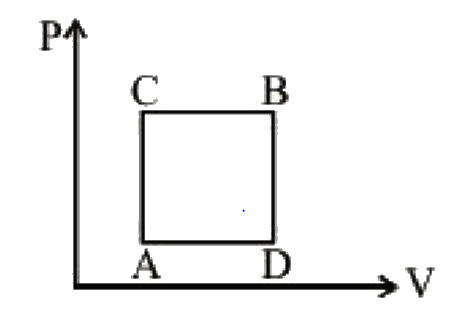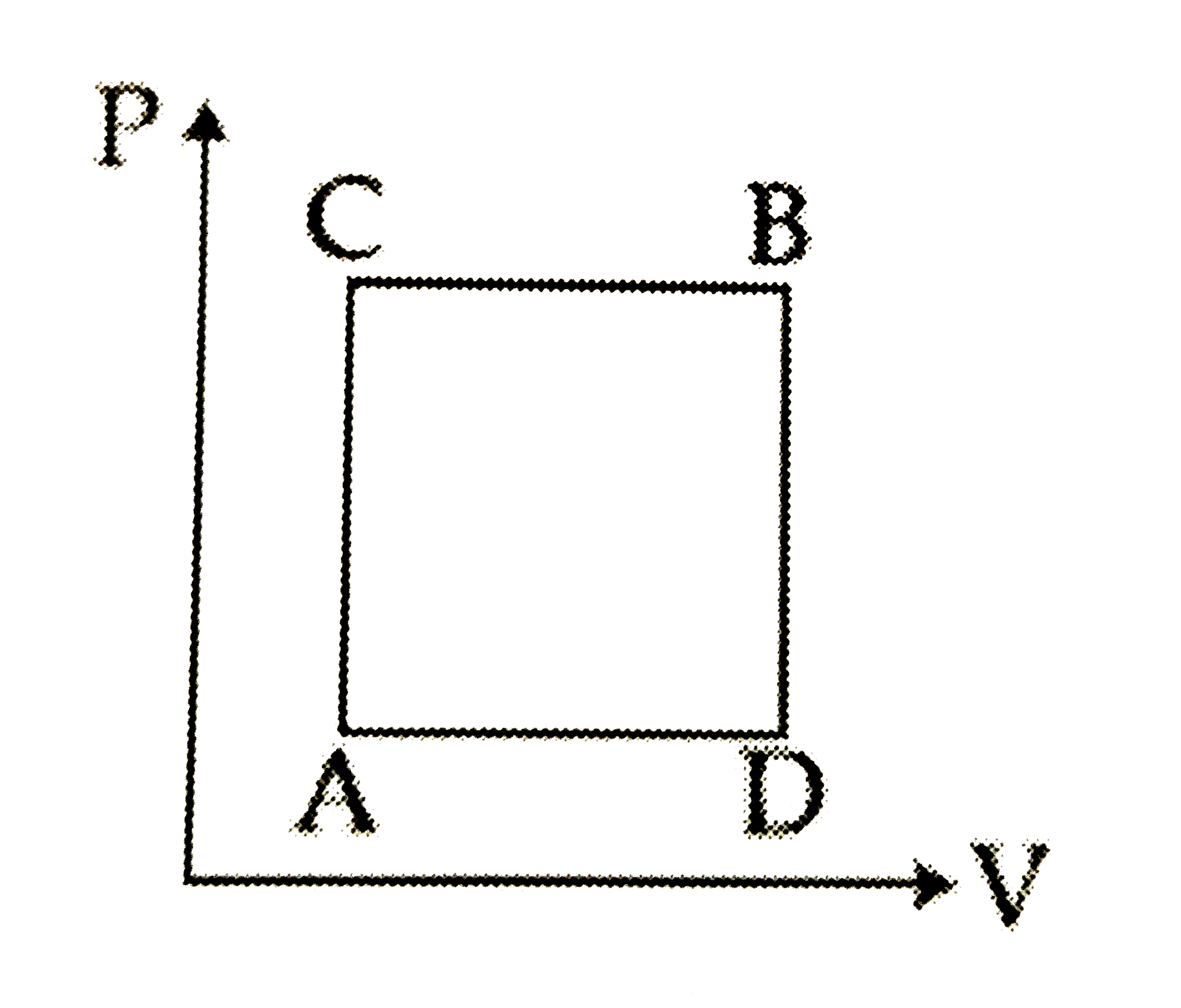When a system is taken from stata a to state b along the path acb as shown in figure, 60 J of heat flows into the system and 30 J of work is done by the system. Along the path adb, if the work done by the system is 10 J, heat flow into the system is

100 J
20 J
80 J
40 J
The correct Answer is:D
According to first law of thermofdynamics,
For the path acb, Qacb=ΔUacb+Wacb
∴ΔUacb=Qacb−Wacb=60J−30J=30J
For the path adb, Qadb=ΔUadb+Wadb
As change in internal energy is path independent, so ΔUacb=ΔUadb
∴Qadb=30J+10=40J
Topper's Solved these Questions
- BOOK - MTG GUIDECHAPTER - THERMODYNAMICSEXERCISE - NEET (ITALS)25videos
THERMODYNAMICS
- BOOK - MTG GUIDECHAPTER - THERMODYNAMICSEXERCISE - AIPMT/NEET (MCQs)26videos
THERMODYNAMICS
- BOOK - MTG GUIDECHAPTER - THERMODYNAMICSEXERCISE - AIPMT/NEET (MCQs)26videos
THERMODYNAMICS
- BOOK - MTG GUIDECHAPTER - PROPERTIES OF BULK MATTEREXERCISE - AIPMT/NEET (MCQs)40videos
PROPERTIES OF BULK MATTER
- BOOK - MTG GUIDECHAPTER - WORK, ENERGY AND POWEREXERCISE - AIPMT/NEET (MCQs)34videos
WORK, ENERGY AND POWER
Similar Questions
When a system is taken from state A to state B along path ACB as shown in figure below, 80J of heat flows into the system and the system does 30J of work.

How much heat flows into the system along path ADB if the work done by the system is 10J:View SolutionWhen a system is taken from A to C through path ABC, 10 J of heat flows to the system and 4 J of work is done by the system.

How much heat flows into the system in path ADC, if the work done by the system is 3 J ?View Solution
Knowledge Check
- Question 1 - Select One
When a system is taken from state A to state B along path ACB as shown in figure below, 80J of heat flows into the system and the system does 30J of work.

How much heat flows into the system along path ADB if the work done by the system is 10J:A40JB60JC80JD100J - Question 2 - Select One
A gas can be taken from A to B via two different processes ACB and ADB.

When path ACB is used 60 J of heat flows into the system and 30 J of work is done by the system. If path ADB is used work done by the system is 10 J. The heat Flow into the system in path ADB is:A80 JB20 JC100 JD40 J
When a system is taken from A to C through path ABC, 10 J of heat flows to the system and 4 J of work is done by the system.

How much heat flows into the system in path ADC, if the work done by the system is 3 J ?View SolutionA gas can be ken from A to B via two different processes ACB and ADB. When path ACB is used 60 J of heat flows into the system and 30 J of work is done by the system. If path ADB is used work done by the system is 10 J. The heat Flow into the system in path ADB is :
 View Solution
View SolutionA gas can be ken from A to B via two different processes ACB and ADB. When path ACB is used 60 J of heat flows into the system and 30 J of work is done by the system. If path ADB is used work done by the system is 10 J. The heat Flow into the system in path ADB is :
 View Solution
View SolutionWhen a system is taken from state A and B along the path ACB, 80J of heat flows into the system
and the system does 30 J of work .
(a) How much heat flows into the system along path ADB if the work done by the system is 10?
(b) When the system is returned from state B to A along curved path,
the work done on the system is 20J. Does the system absorb or liberate heat, and how much ?
(c) If UD−UA=40J, find the heat absorbed in the process AD and DB
 View Solution
View SolutionWhen a system is taken from state A to state B along the path ACB, 80 k cal of heat flows into the system and 30 k cal of work is done.
How much heat flows into the system along path ADB if the work done is 10 k cal ?View SolutionWhen a system is taken from state a to state b, in figure along the path a→c→b, 60J of heat flow into the system, and 30J of work is done :
(i) How much heat flows into the system along the path a→d→b if the work is 10J.
(ii) When the system is returned from b to along the curved path, the work done by the system is −20J. Does the system absorb or liberate heat, and how much ?
(iii) If , Ua=0 and Ud=22J, find the heat absorbed in the process a→d and d→b.
_S01_052_Q01.png) View Solution
View Solution

